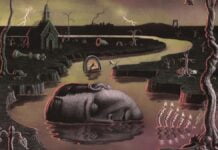Haiku is a traditional Japanese poetry known for its simplicity, precision, and depth. It captures moments of nature, emotion, or insight in a very concise format. Haiku evolved from the hokku, the opening stanza of a collaborative linked-verse poem called a rengu. In the late 19th century, hokku was renamed haiku, and the famous Japanese poet, author, and literary critic Masaoka Shiki popularised it as a standalone form. Although Shiki only lived a short 35 years, he is credited with writing almost 20,000 stanzas, which is quite an accomplishment. The other three great haiku masters are Matsuo Bashō, Yosa Buson, and Kobayashi Issa. Each brought unique perspectives and innovations to the form.
Haiku reached the West through Hendrik Doeff, an art lover from Denmark who was the commissioner of trade in Nagasaki in the 19th century. Although he managed to bring it to the West himself, it wasn’t received at first. It took until the early to mid-20th century for haiku to appear in the English language.
Structure and Syllables
A classic haiku consists of three lines with a specific syllable pattern:
- 5 syllables in the first line
- 7 syllables in the second line
- 5 syllables in the third line
This concise 5-7-5 syllabic structure is the defining characteristic of haiku, creating a brief yet impactful poetic form.
Seasonal Reference
Haiku traditionally includes a “kigo” or seasonal reference, a subtle allusion to the time of year in which the poem is set. This seasonal element helps ground the haiku in the natural world, often evoking vivid imagery and emotions associated with different seasons.
Focus on Nature
Haiku poetry is closely tied to the observation and appreciation of nature. Many haiku capture fleeting moments in the natural world, such as the changing of seasons, the behaviour of animals, or the beauty of landscapes. This connection to nature reflects the Japanese aesthetic of finding profound meaning in the simplest phenomena.
Objective Description
Unlike other poetic forms that rely heavily on metaphor and symbolism, haiku aims for objective description and avoids overt emotional expression. The poet presents a clear, unadorned image or observation, allowing readers to form their emotional response and interpretation.
Juxtaposition and Cutting
Haiku often employs juxtaposition, contrasting two disparate images or ideas to create a sense of tension or insight. Additionally, the concept of “kireji” or “cutting” is used, where a punctuation mark or pause separates the poem’s two parts, creating a brief moment of contemplation or epiphany.
Concision and Imagery
Due to its brevity, haiku relies heavily on concise and evocative imagery to convey its message. The poet must carefully select precise words and vivid sensory details to create a powerful yet economical poetic experience for the reader.
Zen Influence
Haiku poetry is deeply influenced by Zen Buddhism. This tradition emphasises living in the present moment, appreciating the transience of existence, and finding enlightenment in the simplest of observations. This Zen influence contributes to haiku’s minimalist, introspective, and contemplative nature.
Examples of Haiku
Masaoka Shiki
Consider me
as one who loved poetry
and persimmons.
Matsuo Bashō
An old silent pond…
A frog jumps into the pond—
Splash! Silence again.
Yosa Buson
Over the wintry
forest, winds howl in rage
with no leaves to blow.
Kobayashi Issa
A world of dew,
and within every dewdrop
a world of struggle.
While haiku originated in Japan, its simplicity, universality, and ability to capture the essence of a moment have made it a beloved poetic form worldwide. Modern haiku poets often experiment with the traditional form, sometimes relaxing the syllable count or exploring urban and contemporary themes. Though adhering to the strict syllable count can be challenging in English, the essence of haiku -its brevity, focus on nature, and evocative imagery -has been embraced by poets worldwide. English haiku often allows for more flexibility in syllable count while still striving to capture the spirit of the form.






























